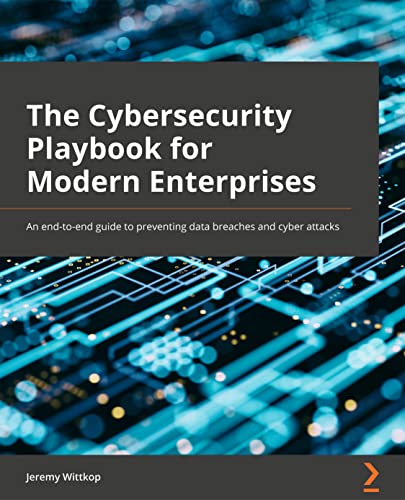Introduction:
In today’s fast-paced digital landscape, organizations are under constant pressure to innovate and adapt to ever-changing market demands. At the heart of this conversion lies data – the lifeblood of any successful business. However, achieving a seamless transition into a digital-first approach often hinges on one critical yet frequently underestimated process: data migration. As businesses strive to leverage advanced technologies and analytics, understanding the intricacies of data migration becomes essential for unlocking the full potential of digital transformation.This article delves into the significance of data migration, exploring its challenges, best practices, and how it can serve as a catalyst for turning your digital aspirations into reality. Join us as we uncover the strategic importance of efficiently transitioning data and the impact it has on enhancing operational agility, driving meaningful insights, and fostering a culture of innovation.
Table of Contents
- Understanding the importance of data Migration in Digital Transformation
- Identifying Challenges and Best practices for Successful Data Migration
- leveraging modern tools and Technologies to Streamline Data Migration
- Measuring Success and Continuous Improvement in Data Migration Strategies
- To Wrap It Up
Understanding the Importance of Data Migration in Digital Transformation
Data migration is a critical facet of digital transformation, acting as the bridge that connects legacy systems to modern solutions. As organizations strive to enhance efficiency, agility, and customer engagement, the transition of data from one system to another becomes paramount. Successful data migration ensures that businesses can leverage their rich repositories of information without disruption. It allows companies to consolidate disparate data sources, eliminate silos, and improve data quality, ultimately enabling data-driven decision-making that fosters innovation.
Moreover, neglecting the data migration process can lead to meaningful setbacks, including data loss, corruption, or compliance issues. Understanding key migration strategies can mitigate such risks and streamline the adoption of new technologies. Consider the following essential elements when planning for data migration:
- Assessment of Current infrastructure: Analyze existing systems and determine what data is essential and what can be archived.
- Data Cleanliness: Ensure that the data is accurate, complete, and formatted correctly before migration.
- Testing & Validation: Implement a rigorous testing phase to validate the integrity and functionality post-migration.
Identifying Challenges and Best Practices for Successful Data Migration
Data migration can be a complex endeavor fraught wiht potential pitfalls that can derail even the best-planned initiatives. Among the moast common challenges are data quality issues, which can arise from incompatible formats or incomplete datasets. Additionally,organizations frequently enough face resistance to change from employees unfamiliar with new systems,leading to delays and complications. technical challenges, such as system downtime and integration difficulties, can also pose significant hurdles for teams managing the migration process. To navigate these obstacles successfully, organizations should consider implementing the following best practices:
- Thorough planning: Conduct a comprehensive assessment of existing data before migration.
- Stakeholder Engagement: Involve all relevant parties early in the process to ensure buy-in and support.
- Testing and Validation: Perform rigorous tests using a small sample of data to identify issues before full-scale migration.
- Regular Monitoring: Continuously track migration progress to address any emerging problems promptly.
Successful data migration doesn’t just rely on avoiding pitfalls; it also hinges on adopting a strategic approach to data handling and management post-migration.Establishing a clear governance framework can substantially improve ongoing data quality and accessibility. Utilizing automation tools can streamline repetitive tasks, reducing the likelihood of human error during data transfer. Moreover, investing in training for staff ensures that team members are equipped with the necessary skills to navigate new systems efficiently. The table below summarizes some essential strategies for effective data migration:
| Strategy | Description |
|---|---|
| Data Cleansing | Eliminate duplicates and correct inaccuracies before migration. |
| Incremental Migration | Transfer data in phases to minimize risks and allow for adjustments. |
| Post-Migration Review | Assess data integrity and performance after migration to ensure success. |
Leveraging Modern Tools and Technologies to Streamline Data Migration
In today’s fast-paced digital landscape, leveraging the right tools and technologies is crucial for achieving efficient data migration. Cloud-based services have emerged as a game-changer, providing scalable resources that allow organizations to transfer data seamlessly without the heavy burden of physical hardware. By employing automated data migration solutions, companies can significantly reduce the risk of errors and downtime. Some key technologies that facilitate this process include:
- ETL Tools: Streamlining extraction, transformation, and loading processes.
- Data Integration Platforms: Enabling seamless connection between disparate data sources.
- API Management: Enhancing communication between applications across different environments.
- Data Virtualization: Allowing access to data without needing physical movement.
Moreover, the implementation of best practices during the migration process can further enhance efficiency. For instance, establishing a robust data governance framework can ensure data integrity and compliance. Creating a comprehensive migration plan that includes thorough testing phases can identify potential pitfalls before they become problematic. A simplified overview of these best practices can be represented as follows:
| Best Practices | Description |
|---|---|
| Define Objectives | Clearly outline the goals of the migration project. |
| Data Profiling | Assess the quality and structure of existing data. |
| Incremental Migration | Implement a phased approach to minimize disruption. |
| Post-Migration Validation | Ensure migrated data meets quality standards. |
Measuring Success and Continuous Improvement in Data Migration Strategies
To effectively gauge the success of data migration strategies, organizations must establish clear, measurable goals tailored to their unique objectives. These goals should encompass both quantitative and qualitative metrics, which may include:
- Data accuracy: Ensuring the integrity and quality of migrated data.
- Timeliness: Assessing whether the migration process adheres to the established timeline.
- Cost-efficiency: Evaluating the expenses incurred against the budget allocated for migration.
- User Adoption: Measuring how quickly and effectively teams can begin leveraging the new data systems.
Continuous improvement in migration strategies necessitates a feedback loop that not only tracks these metrics but also implements lessons learned. By regularly reviewing performance against the set benchmarks,organizations can pinpoint areas for enhancement. This iterative process encourages teams to remain agile and responsive to shifts in technology and business requirements. Strategies might include:
- Post-migration Audits: Conducting thorough reviews to identify discrepancies and areas needing refinement.
- Stakeholder Engagement: Actively involving end-users and stakeholders in the evaluation process to gather insights and suggestions.
- Utilization of Automation: Streamlining repetitive tasks through automation to minimize human error and enhance efficiency.
To Wrap It Up
successfully navigating the complexities of digital transformation hinges on the effective management of data migration. As organizations strive to become more agile, customer-centric, and data-driven, the migration process serves as both a challenge and an opportunity. By prioritizing data integrity, employing the right tools, and fostering a culture of collaboration, businesses can unlock the full potential of their digital assets.As you embark on your own journey of digital transformation, remember that data migration is not merely a technical task but a strategic initiative that can propel your institution toward innovation and growth. Embrace the process, learn from the complexities, and leverage the insights gained along the way. With a solid data migration strategy in place, you’re not just transforming your systems—you’re laying the groundwork for a resilient and future-ready organization.
Thank you for joining us in exploring this critical aspect of digital transformation. Stay tuned for more insights and strategies to help you navigate the ever-evolving digital landscape!
Related Products
-
Sale!
The Principal as Human Resources Leader: A Guide t…
Product Original price was: $39.99.$32.99Current price is: $32.99. -
Sale!
Arts Integration
Product Original price was: $97.99.$48.24Current price is: $48.24. -
OFFENSIVE INTELLIGENCE: 300 techniques, tools and …
Product $36.00







